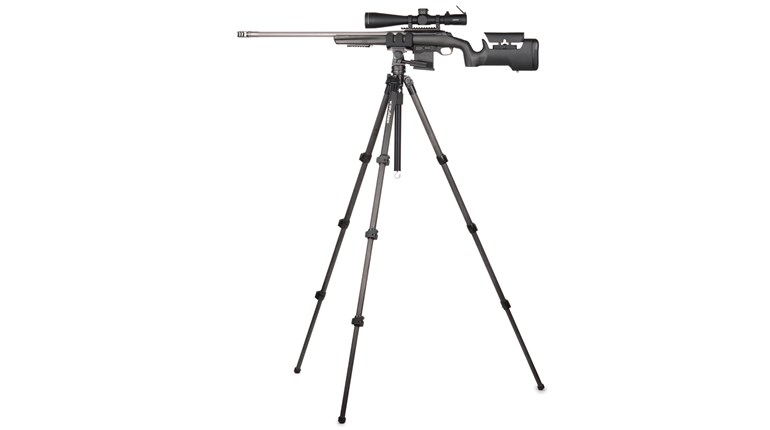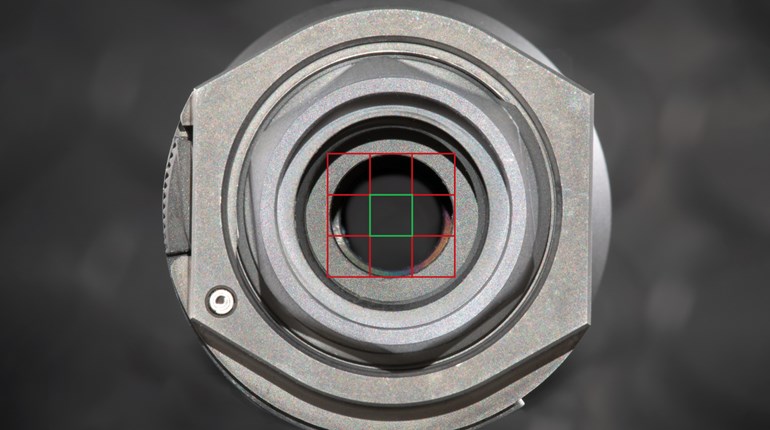
Efforts to make our rifles easier to store and carry have accelerated in recent years, but this is far from a new trend. Takedown rifles have been around for centuries, and hit their high-water mark with lever-action designs in the late 1800s. Folding firearms have existed for nearly as long, with intricately crafted examples from the 17th, 18th and 19th centuries suggesting that the quest to make longarms less long has been underway for generations.
Folding designs blossomed in the 20th century, likely thanks to improvements in production methods and the needs identified during two world wars. Marble’s Game Getter is an early example that hit the market in 1908. This under-folding, wire-stocked over/under remained a handy favorite until it was restricted under the National Firearms Act of 1934. Better-known examples are found among the under- and side-folding military submachine guns and carbines that came into use in the mid-20th century. The side-folding M1A1 Carbine and under-folding AKs are well-known models that come to mind.
Several manufacturers introduced newer, folding- or fully collapsible-stocked, semi-automatic versions of military rifles to the U.S. market in the latter half of the 20th century. Internal operating systems varied, but all allowed full functionality in their most compact modes. While these tended to be high-quality firearms, very few gained widespread commercial traction here. Enduring examples from that era include folding or collapsible options for the FN FAL, SIG Sauer’s 500 series, Heckler & Koch’s roller-locked rifles and Ruger’s Mini-14/Thirty carbines.
Folding stocks got another boost early in the 21st century, thanks again to warfighter needs and further advances in manufacturing. Societal instability and ongoing terror threats within our borders have fueled further interest in easy-to-transport firearms that have more range than handguns. As a result, folding-stock MSRs have finally achieved a commercial foothold on this side of the pond. FN’s SCAR and the (out of production) Bushmaster/Remington ACR were early examples, while SIG’s MCX and CMMG’s Dissent represent newer incarnations.
Bolt-action-rifle owners haven’t been left out in the cold here, either. An increasing number of factory rifles, such as Ruger’s Precision Rifle, SIG’s Cross and CZ’s 600 Trail, come from factories with folding or fully collapsible stocks. These newer, more compact manual repeaters answer both limited-storage-space and backcountry-carry needs better than traditional bolt-action rifles.
Aftermarket stock makers have also stepped up with folders for many popular rifles. Magpul offers a folding chassis for Remington 700 actions, while companies like XLR, KRG and MDT specialize in side-folders for a variety of long-range, tactical and minimalist turnbolts. Several folding stocks are available for semi-auto favorites like Ruger’s 10/22, the SKS family and M1A rifles. Modern, aftermarket AK side-folders put older designs to shame in the comfort and adjustability departments.
AR owners who aren’t content with their partially collapsible carbine stocks can also get into the folding game. Law Tactical’s side-folding adapters are the best-known and have a solid track record for quality and function. I’ve used them for many years without any problems. Sylvan Arms is a newcomer in this arena, offering a similar AR-folding adapter that has done well in my preliminary testing. Both companies advertise their systems as U.S.-made, which is a good thing to look for with aftermarket parts. In recent years, several AR manufacturers have introduced lower receivers with integral folding systems, providing home builders and custom shops with a ground-up option.
Naturally, folding-stock rifles have some cons to go along with their pros. Retrofittable adapters usually add weight and length (when unfolded), which may run counter to minimalist desires. Another issue is rigidity, or a lack thereof. Most of the folding designs I’ve used had some amount of play, ranging from barely noticeable to downright shaky. Thankfully, modern designs are generally solid enough to allow good shooting. Still, if anything less than a fully rigid stock drives you crazy, you may want to pass on this one.
The simplest folders—with a couple rods and a buttplate the size of a soap sliver—are more likely to provide cheek welts than welds. While comfort takes a backseat when size-reduction has top priority, it’s nonetheless worth considering before choosing a tiny folder for a full-size, precision rifle.
Folders don’t always hinge to the most convenient side. One that places the stock between your body and the rifle or that blocks a rifle’s controls can be problematic when carried while folded. We’re starting to see factory offerings that fold in either direction, but most existing designs and retrofits are still unidirectional.
Lastly, a direct-impingement AR’s buffer assembly is disabled when adapted to fold, rendering semi-auto, centerfire-rifle-cartridge function impossible without further modification. Two companies have partial solutions to this limitation.
Law Tactical’s drop-in ARIC bolt-carrier group allows folded firing when using the company’s folding-stock adapter. ARIC models are specific to 5.56 NATO and .300 BLK, come in either supersonic or subsonic versions and have received mixed reviews. Dead Foot Arms’ MCS folding adapter combines a folding hinge with a PDW-like short buffer and bolt carrier, and also allows folded firing. The MCS has a solid following and is advertised as being compatible with a wide variety of small-frame AR offerings.
Whether or not a rifle can be fired with the stock folded may seem trivial. However, when defending oneself in very tight confines or restrictive terrain, having a rifle that can be brought to bear quickly is important. While in the Army, I had several sniper rifles that were modified to allow firing with folded or fully collapsed stocks. They proved especially handy in rugged mountains, where threats came fast and close, and in the confines of vehicles, where a full-size rifle couldn’t always be shouldered. The same could be said for any situation where dangerous critters or hostile interlopers require immediate attention in tight spaces.
At the end of the day, a rifle with a folding stock may not be your cup of tea. I have both a rifle- and a large-format pistol set up to fold for specific needs, but due to the additional weight added by a folding adapter, my “go-to” rifle lacks that capability. For me, the folding-stock option is simply a component that performs its primary job well, but not necessarily as a one-size-fits-all accessory.

































